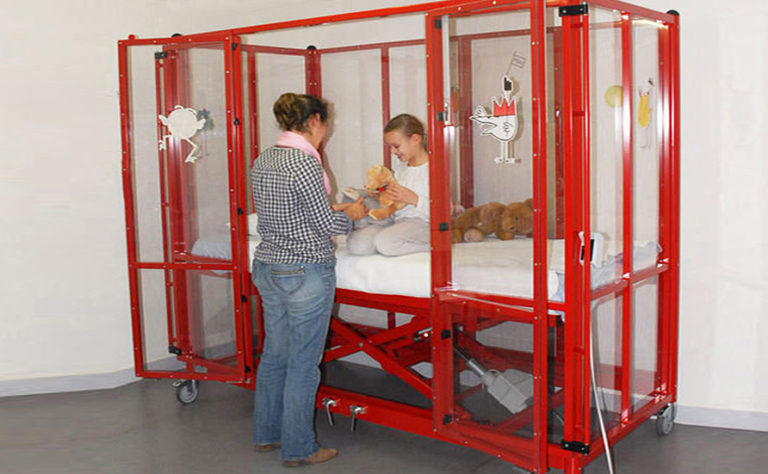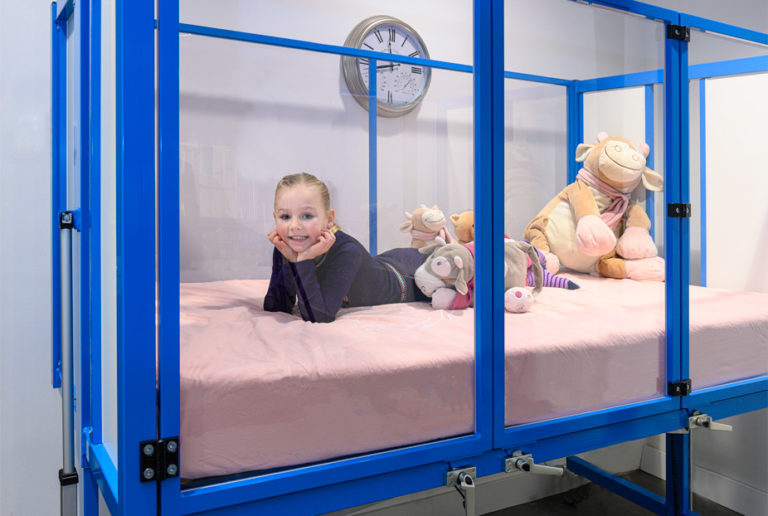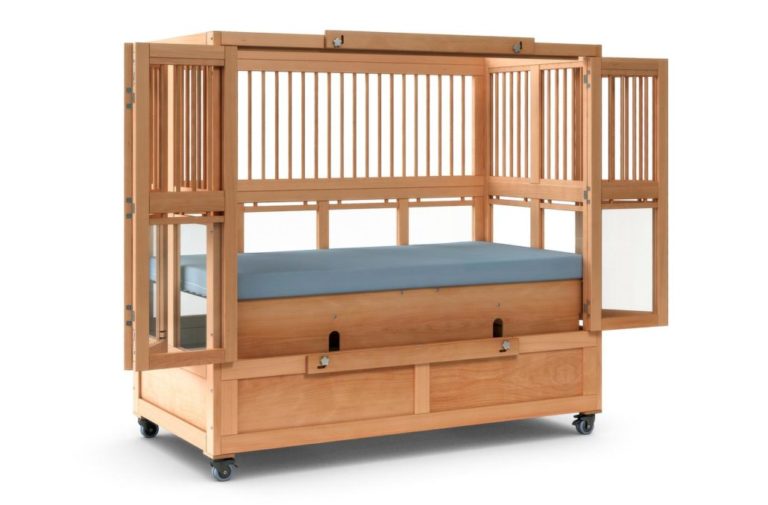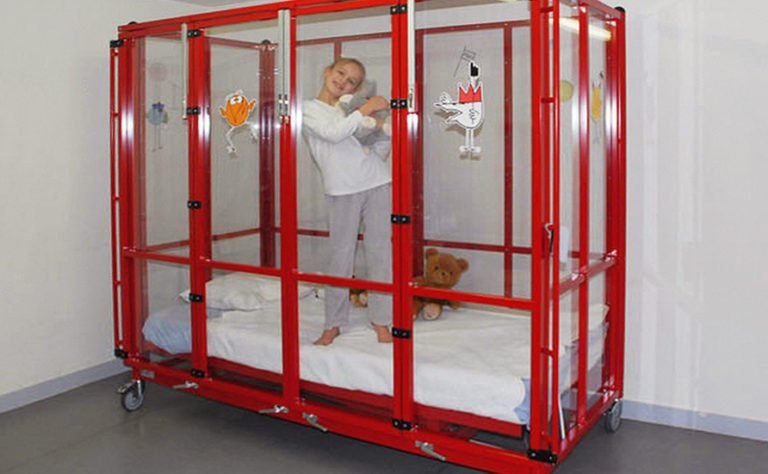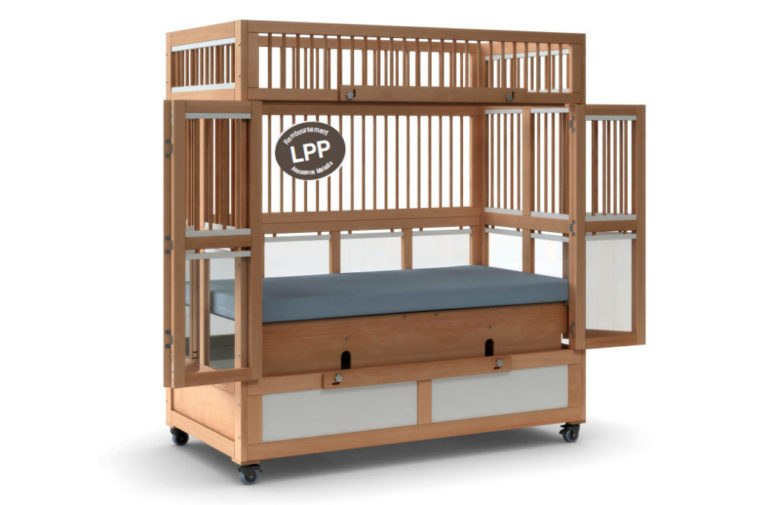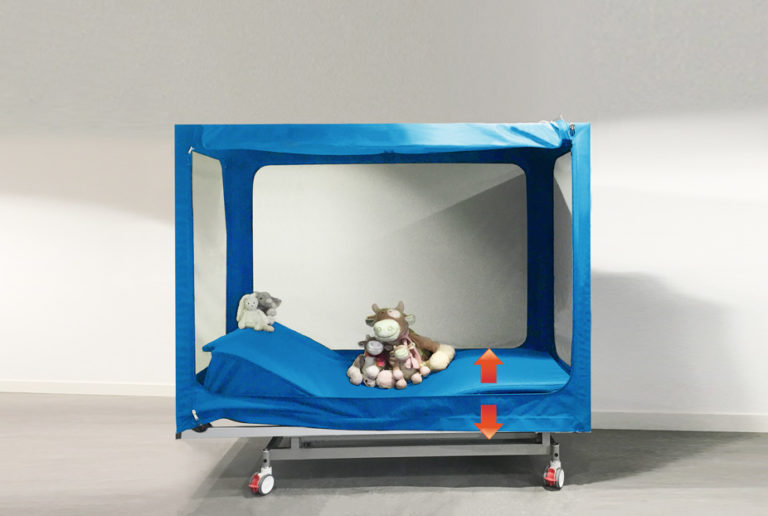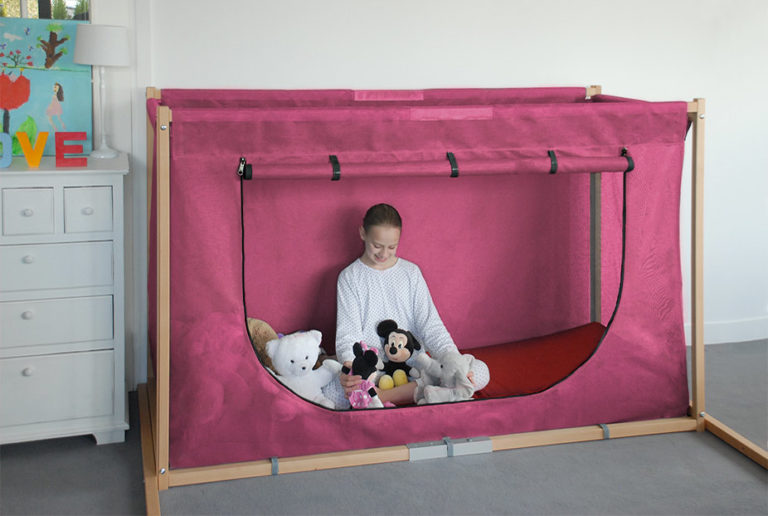- In the case of handicaps or multiple handicaps, such as Angelman syndrome, Rett syndrome or Huntington's syndrome, a secure bed helps to avoid the risks of imbalance and falling out of bed.
- In the case of hypotonic or paraplegic children, care is made easier by the lateral access and height-adjustable base.
- In some cases of Autism Spectrum Disorder (ASD), children need to feel protected and to spend the night in a secure, enveloping place: some beds can create this reassuring space.
- In the case of Down's syndrome or behavioural problems, an adapted bed makes it possible, particularly at night, to keep the child safe in bed by preventing them from wandering off, by closing the doors.
